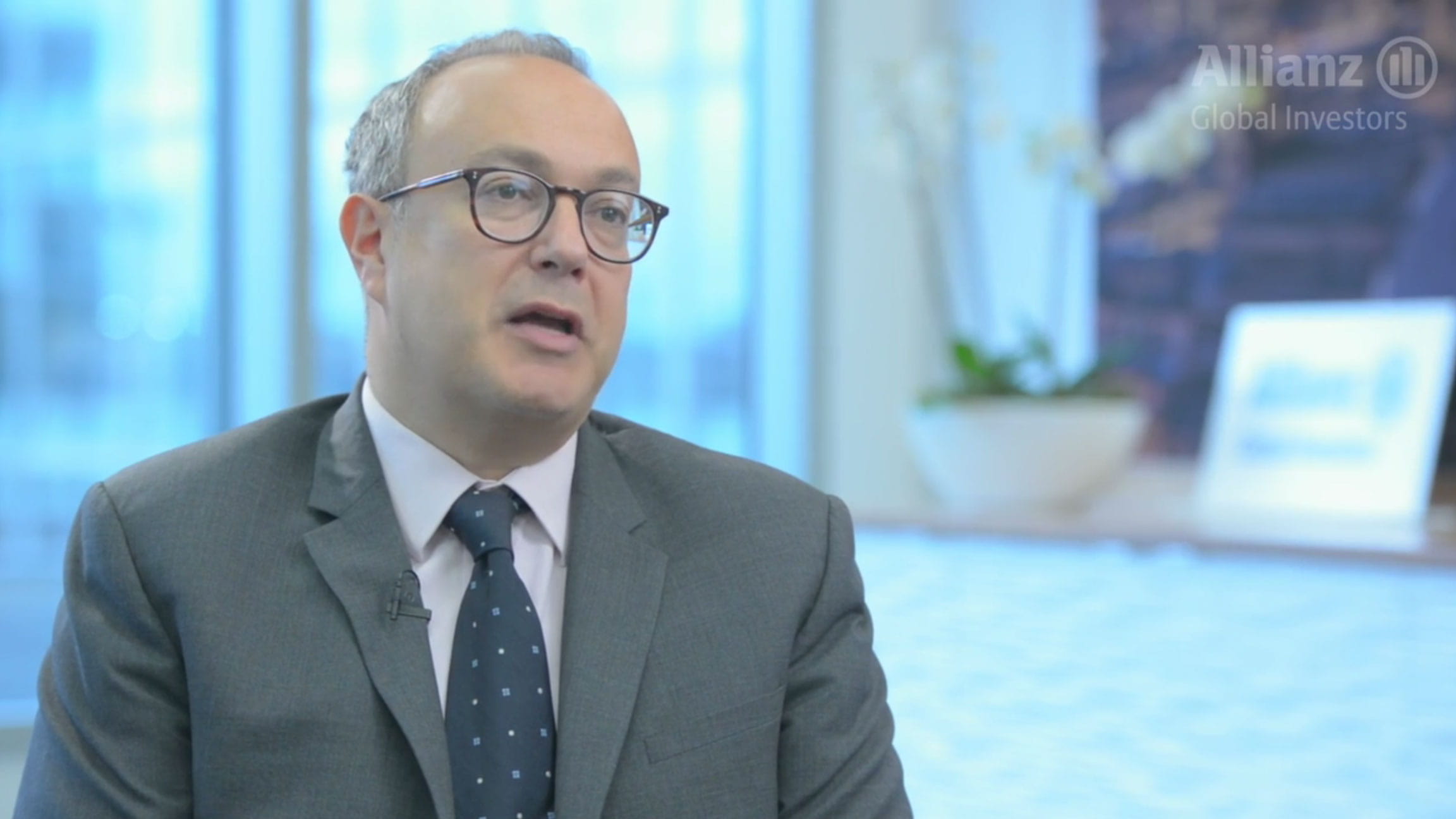
Samenvatting
In the days of millennials inheriting the Earth and information at the swipe of our fingers, many investors are uninspired by plain vanilla investment products. People want more out of their investments, and this isn’t limited to the size of the return – it includes the ability to invest in the areas of the economy that are of personal interest to them – and moreover for their money to be aligned with their personal views of the world. They want to be part of the story.
|
|
Download the article here |
How is thematic investing different?
Thematic funds serve the large market of investors who have forward-looking convictions and want to identify longer-term growth opportunities. Typically, themes are well-known, starting as topics of conversation among budget decision makers within companies, and will later become visible in most people’s personal experience.
Themes are best characterised as powerful and secular shifts, triggered by innovation or regulation, a narrowing supply-demand situation or socio-economic factors. Thematic funds aim to identify the winning themes impacted by these shifts and to allow investors to participate in them. They permit anyone who has a view on a theme to take it forward with an investment.
Figure 1: Four megatrends

Source: Allianz Global Investors. This is for illustrative purposes only.
A key benefit of thematic investing is the unconstrained investment universe. While traditional investing still largely adheres to narrow country boundaries or sector classifications, thematic investors view companies through a prism of either winning or losing regarding their respective theme, which typically attracts investments over many years if not decades.
Thinking long-term has the benefit of taking advantage of most investors’ myopia: the majority of market participants focus on forecasting short-term earnings while the real value is in the long term. Also, traditional
investors, constrained by sector or region, will likely fail to identify all of the beneficiaries along a theme’s value chain. These factors leave room for mispricing in overlooked stocks even when the theme itself might already be widely acknowledged.
In addition to financial returns, however, thematic investing offers more: it means channelling investment only into the areas of greatest growth potential globally. This provides the social benefit of helping up-and-coming companies in the most cutting edge industries to raise capital and fulfil their potential.
Breaking down megatrends
An investible theme will typically have its origin in at least one of four sources of structural shifts (megatrends). These are: 1) Urbanisation, 2) Technological Innovation, 3) Resource Scarcity, and 4) Demographic and
Social Change (Figure 1).
These megatrends, however, are too vague to invest in directly. They have a broad definition and perhaps a 20-100 year time horizon. In order to gain exposure to them, we need to break them down into investable
themes with more like a five-20 year time horizon (Figure 2). In a diversified fund, within each theme there are several topics which adapt and change over time (Figure 3).
For example, the theme of Artificial Intelligence, with the potential to disrupt every industry and change how we live and work, is a way to access the megatrend of Technological Innovation.
The Water theme grants access to the Resource Scarcity megatrend – allowing investors to take part in developing solutions for a key environmental and social issue while generating an attractive return. Likely
topics include water quality, water supply and water efficiency.
Some themes, however, are less obviously linked to megatrends, such as consumer preferences that shift slowly but surely in response to demographic factors (megatrend: Demographic and Social Change). The growing Pet Economy for example falls into this category. Its investable topics include pet healthcare and pharmaceuticals, biotech, insurance and food. This theme is particularly popular with pet owners and animal lovers who experience the rising costs for their loved ones first hand.
Figure 2: Breaking down megatrends

Source: Allianz Global Investors. This is for illustrative purposes only.
How to be successful in thematic investing
Without a clear definition in the marketplace and so many products around trends available, it is important to be able to distinguish between true long-term themes and short-term trends (fads) – the latter of
which are typically priced in quickly but don’t last much longer than a news cycle, as they lack the support of a secular growth theme.
Secondly, a thematic fund needs to have enough stocks available of sufficient market capitalisation in order to be invested in that theme rather than just in a few stocks. A thematic fund should be sufficiently broad to diversify away the stock-specific factors.
Thirdly, in order to make the most of a theme’s upside potential, a thematic fund should have “pure” exposure to the theme. This means it invests only in companies for which the theme
accounts for all, or at least a significant amount of, their business. As the degree to which a company is benefitting from a theme can change over time, the best way to ensure participation as an investor is to look for
actively managed products that can adapt and react.
Once you have picked an investment theme worthy of its name, it will have a long lifespan ahead of it, but that doesn’t automatically make it a good investment at every point in time. Themes such as renewable energy, the internet and biotechnology have turned out to become material parts of our daily lives, but all of them experienced years of volatility and poor investment performance along the way
as investors priced in too much too fast.
The best timing for thematic investing is (unsurprisingly) usually at the very beginning, once a theme starts to attract actual real-life investments that allow companies to generate profits. This is when the attention of
mainstream investors and corporate decision makers starts to rise. Stocks typically rally in these early years on the back of high expectations, which are then often followed by a sobering sell-off when things turn out to move much more slowly than originally thought. This then creates the second entry opportunity into the theme after the initial hype has passed, as the underlying trends which fuelled the theme will remain intact.
In order to mitigate timing risks, investors could consider investing in a multi-theme fund that actively manages the selection of themes for them.
Whether investing in a single-theme or a multitheme fund, investors should give preference to actively managed portfolios rather than their passive counterparts. An ETF which replicates an index will invest in the theme’s entire investable universe, without taking into consideration factors such as valuation, growth potential and corporate governance. One may find a few years later that a theme’s investable
topics have changed and the ETF has been left behind. It is, in fact, the topic level that provides the real alpha generation (Figure 2) – and these usually have a much shorter time horizon than themes. An actively managed fund will be able to adapt not just its stock holdings but also its topics held under the theme umbrella (Figure 3).
Choosing an actively managed fund allows the investor to benefit from the upside of the theme with purity of exposure while it is also likely to reduce the risk of being invested in overvalued stocks or in topics that have already peaked or passed.
Figure 3: Example of a theme and its related topics

Source: Allianz Global Investors. This is for illustrative purposes only.
Key takeaways
With thematic investing, the investor becomes
part of the story. Those with strong convictions
about the future economic success of a theme
(and/or its social or environmental benefits)
are able to follow their convictions and
channel investments into them. As well as
financial return, investing thematically can
provide the social benefit of helping
companies in the most cutting edge and
important industries to fulfil their potential.
However, with the many products
available, it is crucial that the investor does
his/her homework to differentiate
between long-term themes and fads. Size
of the investable universe, purity of
exposure and investment timing also
need careful consideration. Those who
follow these rules will be rewarded with
better performance1 thanks to support
from secular growth. We believe that in
the area of thematic investing in
particular, actively managed products
have a lot to offer.

Source: Allianz Global Investors. This is for illustrative purposes only.
April 2019
1 A performance of the strategy is not guaranteed and losses remain possible.
Investing involves risk. The value of an investment and the income from it may fall as well as rise and investors might not get back the full amount invested.
Allianz Thematica is a sub-fund of Allianz Global Investors Fund SICAV, an open-ended investment company with variable share capital organised under
the laws of Luxembourg. The value of the units/shares which belong to the Unit/Share Classes of the Sub-Fund that are not denominated in the base
currency may be subject to a strongly increased volatility. The volatility of other Unit/Share Classes may be different. Past performance is not a reliable
indicator of future results. Investment funds may not be available for sale in all jurisdictions or to certain categories of investors. This communication has
not been prepared in accordance with legal requirements designed to ensure the impartiality of investment (strategy) recommendations and is not
subject to any prohibition on dealing before publication of such recommendations.
For investors in Europe (excluding Switzerland)
For a free copy of the sales prospectus, incorporation documents, daily fund prices, key investor information, latest annual and semi-annual financial
reports, contact the issuer at the address indicated below or www.allianzgi-regulatory.eu. Austrian investors may also contact the Austrian information
agent Allianz Investmentbank AG, Hietzinger Kai 101-105, A-1130 Vienna. Please read these documents, which are solely binding, carefully before
investing. This is a marketing communication issued by Allianz Global Investors GmbH, www.allianzgi.com, an investment company with limited liability,
incorporated in Germany, with its registered office at Bockenheimer Landstrasse 42-44, 60323 Frankfurt/M, registered with the local court Frankfurt/M
under HRB 9340, authorised by Bundesanstalt für Finanzdienstleistungsaufsicht (www.bafin.de). Allianz Global Investors GmbH has established branches
in the United Kingdom, France, Italy, Spain, Luxembourg and the Netherlands. Contact details and information on the local regulation are available here
(www.allianzgi.com/Info).
For investors in Switzerland
For a free copy of the sales prospectus, incorporation documents, daily fund prices, key investor information, latest annual and semi-annual financial
reports, contact the Swiss funds’ representative and paying agent BNP Paribas Securities Services, Paris, Zurich branch, Selnaustrasse 16, CH-8002 Zürich
or the issuer either electronically or by mail at the given address. Please read these documents, which are solely binding, carefully before investing. This is
a marketing communication issued by Allianz Global Investors (Schweiz) AG, a 100% subsidiary of Allianz Global Investors GmbH, licensed by FINMA
(www.finma.ch) for distribution and by OAKBV (Oberaufsichtskommission berufliche Vorsorge) for asset management related to occupational pensions.
AdMaster 814355 | 19-1315

Samenvatting
Investment income provides many benefits – including guarding against inflation – but today’s “safe” bonds may offer no or ultra-low returns. We suggest investors hunt for income among “riskier” income generators like corporate bonds, emerging-market debt and dividend-paying stocks.
Key takeaways
|








